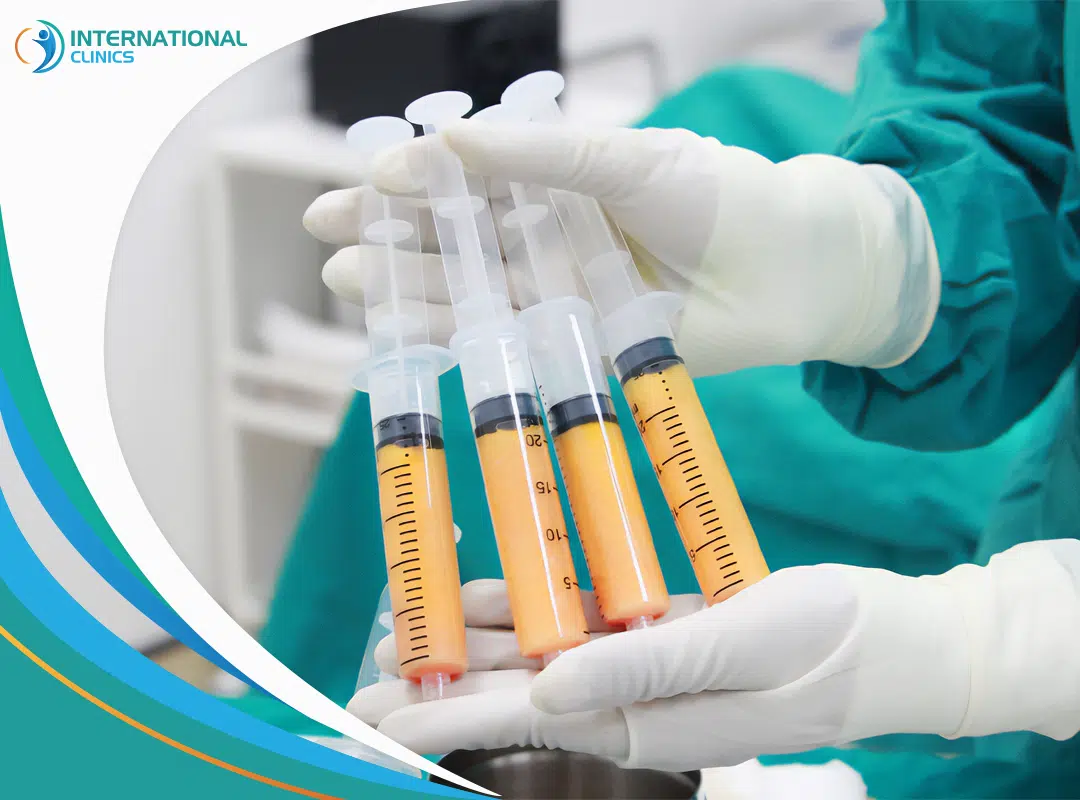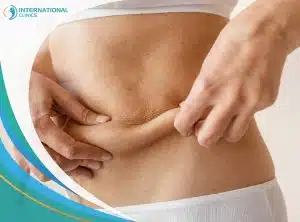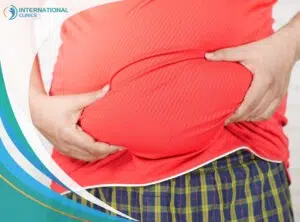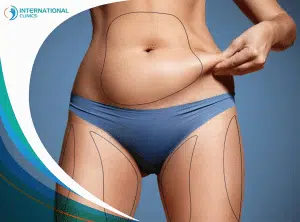Liposuction surgery is a fat removal cosmetic Procedure designed to eliminate excess body fat from different areas that are difficult to target with regular exercise and a healthy diet.
This procedure specifically targets localized fat deposits that are often found in regions like the buttocks, hips, thighs, and abdomen.
However, liposuction isn’t a method for weight loss and doesn’t address fat around internal organs (known as visceral fat). The primary goal of this treatment is only to reshape the body, and its results can last as long as a healthy weight is maintained.
The areas where liposuction in Turkey is frequently performed also encompass the back, neck, chin, upper arms, back of the arms, and calves. During this procedure, fat is extracted using a cannula.
The cannula is inserted beneath the skin, and a high-pressure vacuum is employed to suction out the excess fat. Nonetheless, liposuction techniques are diverse and there are many options to consider.
Besides, people can choose to combine liposuction with other cosmetic surgeries, such as facelifts or tummy tucks. This allows for multiple aesthetic enhancements to be undertaken simultaneously.

The Different Types of Liposuction
Learning the different liposuction methods or techniques helps you make the right decisions before going forward and undergoing the surgery. Below is a quick overview of the most popular liposuction choices:
Tumescent Liposuction
Definition of Tumescent Liposuction
This method uses tumescent anesthetic along with tiny cannulas to infuse a mixture of adrenaline and saline before extracting fat. “Tumescent,” in this context, signifies that the area becomes swollen and firm.
Often, the volume of saline solution injected is roughly two to three times greater than the amount of fat and liquid being taken out. The small cannulas create tunnels in the layer just beneath the skin, which results in a more efficient and less disruptive removal of fat compared to larger cannulas.
Process of Tumescent Liposuction
The mixture of saline, adrenaline, and local anesthesia causes the treated area to swell and become firmer. This clever tactic prevents major fluctuations in bodily fluids during the procedure, which could otherwise lead to low blood pressure.
One more advantage is the presence of adrenaline, which narrows down the blood vessels and reduces the chances of any surgical bleeding, and brings the best liposuction outcomes. Hence, tumescent liposuction offers a safer and more efficient way to reshape your body while keeping surgical risks away from the body.
Benefits of Tumescent Liposuction
Tumescent liposuction could be a suitable choice for those who seek minor fat reduction. The used adrenaline acts as a vasoconstrictor, which lowers the risk of bleeding. The tumescent method offers several benefits, including:
- No need for intravenous fluid replacement.
- No need for general anesthesia.
- Less risk of infection and bleeding.
- Minimize the need for additional procedures.
- The anesthetic effect can last up to 24 hours.
Comparing Tumescent Liposuction to Other Methods
In general, both standard and tumescent liposuction aim to eliminate stubborn fat that diet and exercise can’t address. However, these two procedures have significant differences. Standard liposuction removes more fat and often requires general anesthesia, which isn’t needed for tumescent liposuction.
After tumescent liposuction, you won’t have to deal with the risks associated with general anesthesia. In fact, you can usually return home a few hours after the procedure. On the other hand, traditional liposuction typically involves spending a night in the hospital to recover from the effects of the surgery.
People shouldn’t confuse tumescent liposuction with the “wet technique” or “water-assisted liposuction”, which is actually a combination of both standard and tumescent liposuction methods.
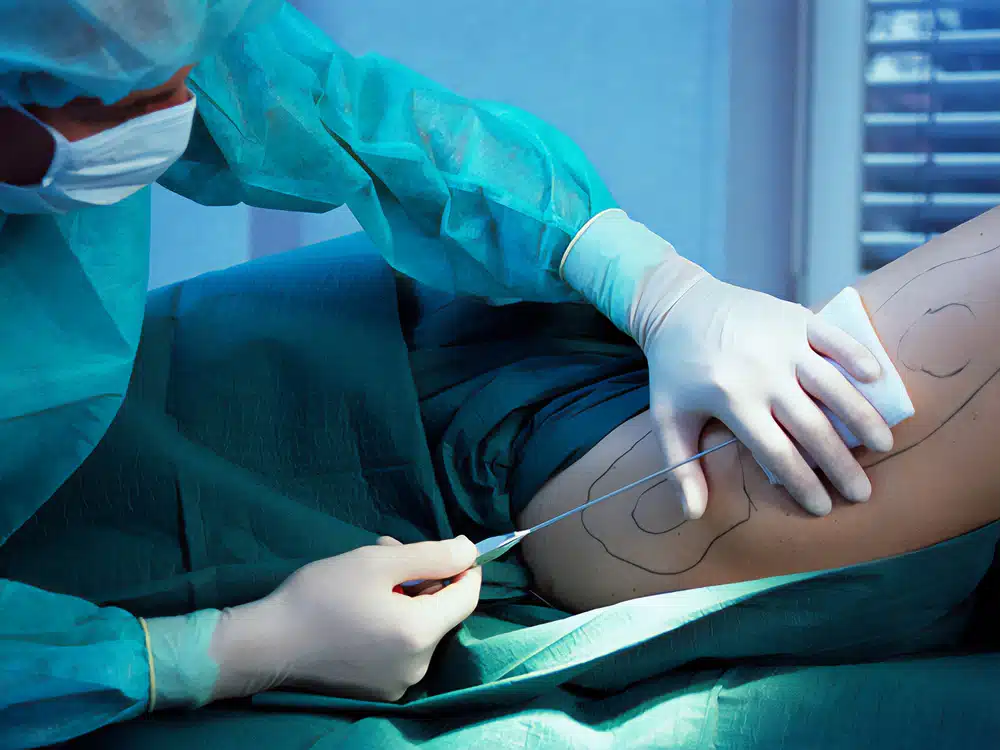
Get your free medical consultation now!
Vaser Liposuction
Definition of VASER Liposuction
The term “VASER” is an abbreviation for “vibration amplification of sound energy at resonance”, which is a technology that uses strong ultrasound waves to break apart the connections between fat cells. VASER Liposuction is a type of ultrasound assisted liposuction.
VASER liposuction offers a gentle and highly precise method of fat removal compared to other types. Commercially, it goes by the name “VASERlipo®”, and it uses ultrasound energy to achieve minimally invasive body contouring for enhancing your appearance.
Many women and men prefer VASER liposuction because it delivers impressive results with reduced discomfort and a shorter recovery period compared to conventional liposuction methods.
- Read more about Vaser liposuction
Process of VASER Liposuction
Simply put, VASER liposuction uses ultrasound waves to break down and transform fat cells into a liquid form, which makes it easy for doctors to remove them out of the body. This process is much gentler on surrounding tissues than conventional liposuction.
You’ll receive general anesthesia or a type of anesthesia called conscious sedation for your comfort.
Next, small incisions will be made in the skin and ultrasound probes will be used to disintegrate the fatty tissue. This technique makes it easier to suction out the liquefied fat through a special needle.
Benefits of VASER Liposuction
VASER liposuction comes with many benefits, such as:
- It’s minimally invasive with smaller incisions
- Helps create natural-looking body contours
- Reduced harm or damage to nearby tissues
- It’s an outpatient procedure
- Causes less pain, bruising, and bleeding
- Highly precise and allows for targeting very specific areas
Comparing VASER Liposuction to Other Methods
VASER liposuction is less invasive (or damaging) compared to traditional liposuction. This means it’s a quicker procedure with minimal downtime, and you won’t need to stay in the hospital overnight.
During VASER liposuction, a local anesthetic with sedation is used instead of general anesthesia, which enhances your safety and comfort. Additionally, the recovery process is faster, and the procedure is gentler on your body compared to surgical liposuction.
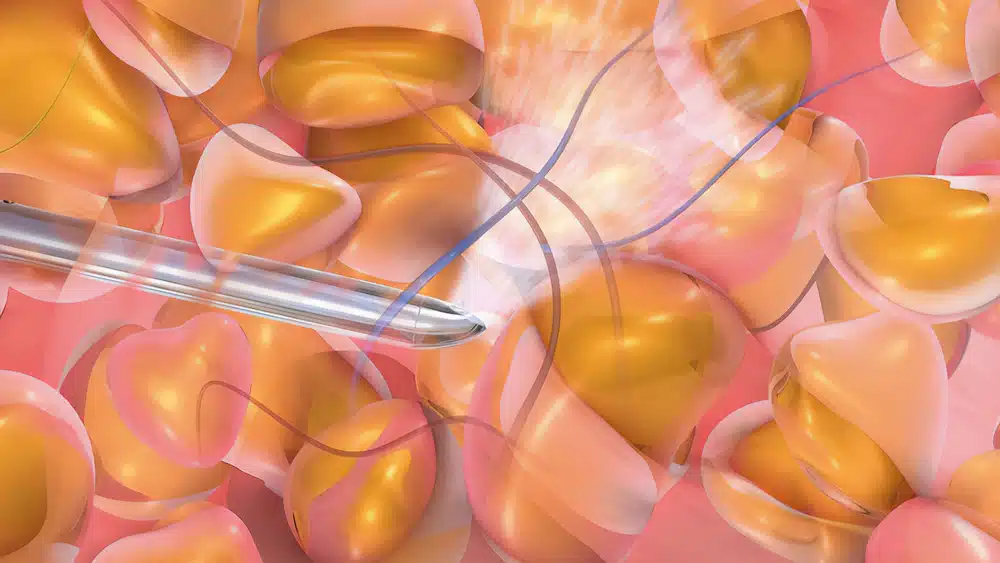
Water Assisted Liposuction
Definition of Water-Assisted Liposuction (WAL)
Water- assisted liposuction (WAL) or water-jet liposuction is a cosmetic procedure that removes fat and separates fat cells using the power of water to minimize the risks. This technique keeps the fat cells mostly undisturbed and healthy.
Unlike other liposuction options, which involves injecting the body with tumescent fluid and manually extracting fat cells using a cannula, WAL uses a gentle, pressurized stream of saline to dislodge and remove fat.
- More about Water Assisted Liposuction
Benefits of Water-Assisted Liposuction (WAL)
WAL is often the top choice for those seeking excellent results with minimal effort. The reasons behind this include:
- It’s nearly painless and leads to less blood loss and fewer bruises and swelling.
- It doesn’t affect the nearby tissues.
- It minimizes the chances of surgical complications.
- Can be performed under local anesthesia.
Comparing Water-Assisted Liposuction (WAL) to Other Methods
WAL is a more gentle and effective approach for fat removal compared to traditional liposuction methods. In the conventional method, an irrigation solution needs to stay in the body for some time, which extends the treatment time.
WAL makes the overall procedure quicker and safer. It also eliminates the risk of thermal injuries like burns and lowers the chances of bruising and injury to the nerve tissues beneath the skin.
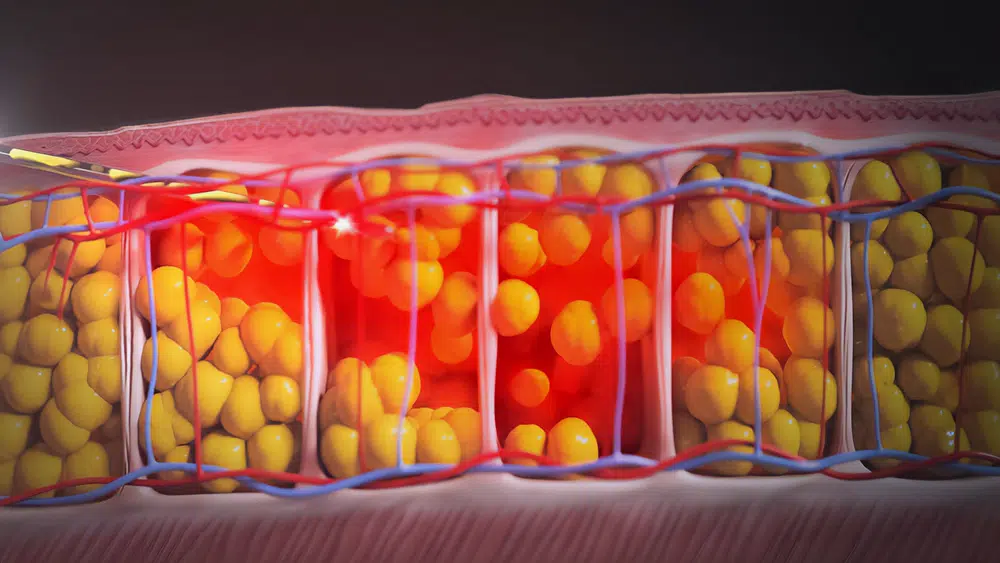
Laser Liposuction
Definition of Laser Liposuction
Laser liposuction is a cosmetic treatment that relies on laser energy to heat up and eliminate fat cells. The method is suitable for reducing fat in different body regions, and it can be either minimally invasive or noninvasive, meaning it involves smaller incisions or no incisions at all.
The procedure is known for its quick recovery time and minimal associated risks. Like surgical liposuction, laser lipolysis permanently removes fat cells from your body. However, it’s less painful with a shorter recovery process and less complicated process. Additionally, it carries a lower risk of leaving you with loose skin after the treatment, and that’s why many people consider it an “advanced liposuction” or “modern liposuction”.
- Read more about Laser liposuction in Turkey
Process of Laser Liposuction
Surgeons rely on paddle-like applicators during the procedure. These paddles release heat that penetrates your skin and warms up the fat cells beneath. As the heat affects the fat cell membranes, the cells die, and the body starts to absorb them.
However, seeing the full results of the treatment requires patience, typically around six weeks. Once this period is finished, you should observe noticeable sculpting in the treated area. In some cases, individuals may require multiple treatments to achieve their desired outcome.
Pros & Cons of Laser Liposuction
Laser liposuction delivers outcomes on par with traditional liposuction, but it offers a less invasive approach and smoother recovery. This procedure is particularly suitable for those aiming to reduce excess fat in specific areas in the abdomen and flanks.
While laser liposuction entails minimal risks, some people may notice redness and mild swelling, which are generally manageable. In rare cases, there is a small risk of severe infection at the incision sites.
Laser Liposuction Devices & Brands
Laser liposuction can be carried out using different devices, each of whom comes with different brands, price tags, and pros and cons. The most prominent of them include:
SmartLipo
This technology is produced by the American manufacturer “Cynosure” and is relying on medical-grade lasers to generate a powerful beam of light. It’s effective in breaking down fat cells and melting fat without causing harm to nearby tissues.
- Read more about Smartlipo
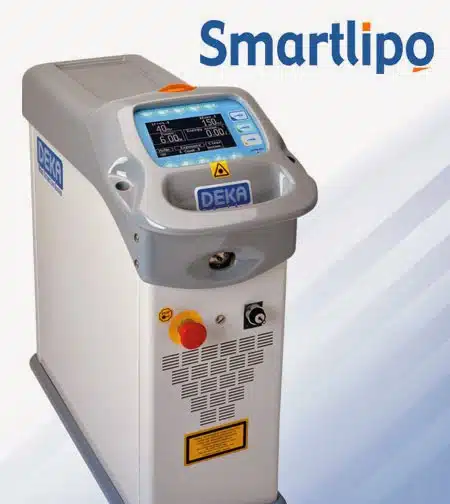
SlimLipo
This system uses slender, wide cannulas, which cause minimal disruption to the subcutaneous layer. This, of course, can lead to reduced post-operative pain and quicker recovery. It was introduced to the market by the American manufacturer Palomar, featuring unique laser technology.
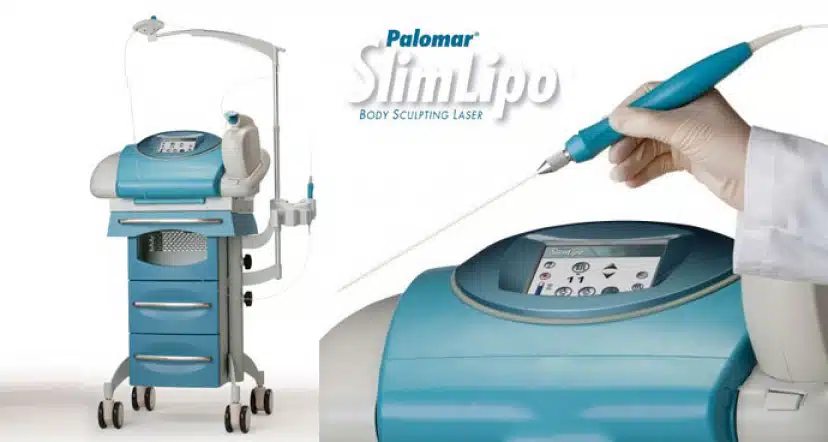
CoolLipo
Similar to other laser liposuction methods, CoolLipo uses laser wavelengths to dissolve fat and tighten the skin. CoolTouch, Inc. designed CoolLipo specifically for treating smaller areas like the face, chin, and neck.

SculpSure
This is a popular form of laser lipolysis and one of the most desirable liposuction technologies. In short, SculpSure is non-invasive, light-based technology designed to target and eliminate fat cells and enhance the overall appearance.
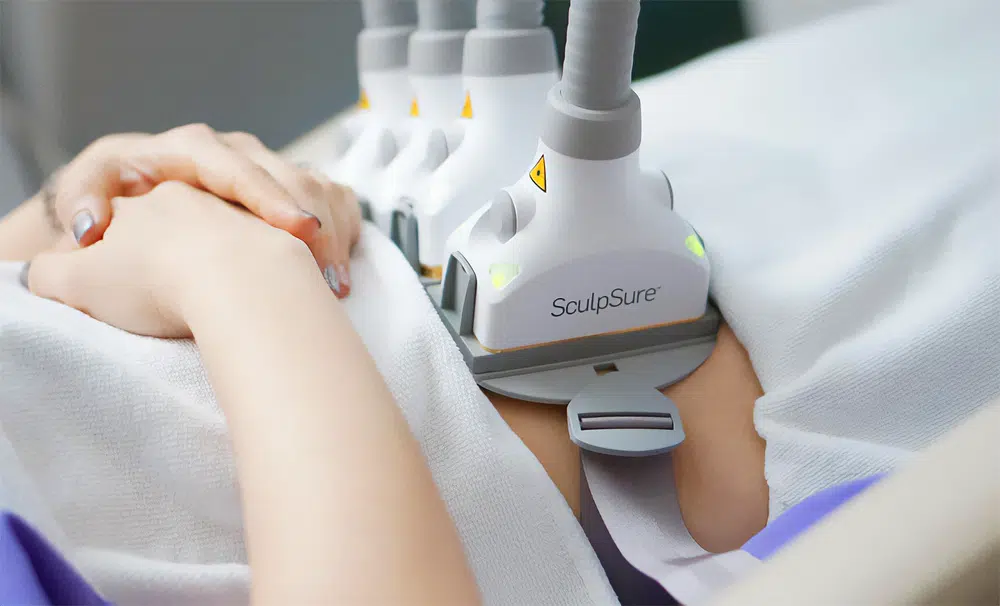
Power Assisted Liposuction
Definition of Power-Assisted Liposuction (PAL)
Power-assisted liposuction (PAL) is a fat reduction method that uses an electric device with vibrations to break down fat cells. This device, commercially known as “MicroAire” was initially developed and later improved to make the procedure more efficient and less physically demanding.
In this technique, the machine connects the cannula to a handpiece that oscillates. This handpiece moves the cannula back and forth in order to break up the fatty tissue and make it simpler to extract during the procedure.
- Read more about Power Assisted Liposuction
Process of Power-Assisted Liposuction (PAL)
Power-assisted liposuction (PAL) adds a gentle vibrating motion to the cannula to significantly improve the whole procedure. This vibration effect reduces the physical effort required by the surgeon when maneuvering the cannula, resulting in less bruising, reduced swelling, and a quicker recovery.
Furthermore, this method enhances the surgeon’s precision, especially when sculpting fibrous areas like the back or chest. Often, the procedure relies on smaller diameter cannulas that vibrate at a high frequency.
These vibrating cannulas move smoothly through the tissues, delicately dislodging fat cells from their connections. The removed fat cells are then suctioned away gently using a vacuum device.
Safety & Efficacy of Power-Assisted Liposuction (PAL)
When it comes to liposuction safety, power-assisted liposuction (PAL) is known for being a superior option compared to laser-assisted and ultrasound-assisted liposuction techniques.
Methods like SmartLipo and Vaser lipo use heat for fat removal, which can pose a risk of burns to the patient. This doesn’t occur in the case of PAL.
After all, PAL doesn’t generate heat during the process, which eliminates any possibility of skin burns. This makes it a safer and more comfortable choice for many people, but it still requires surgical expertise.
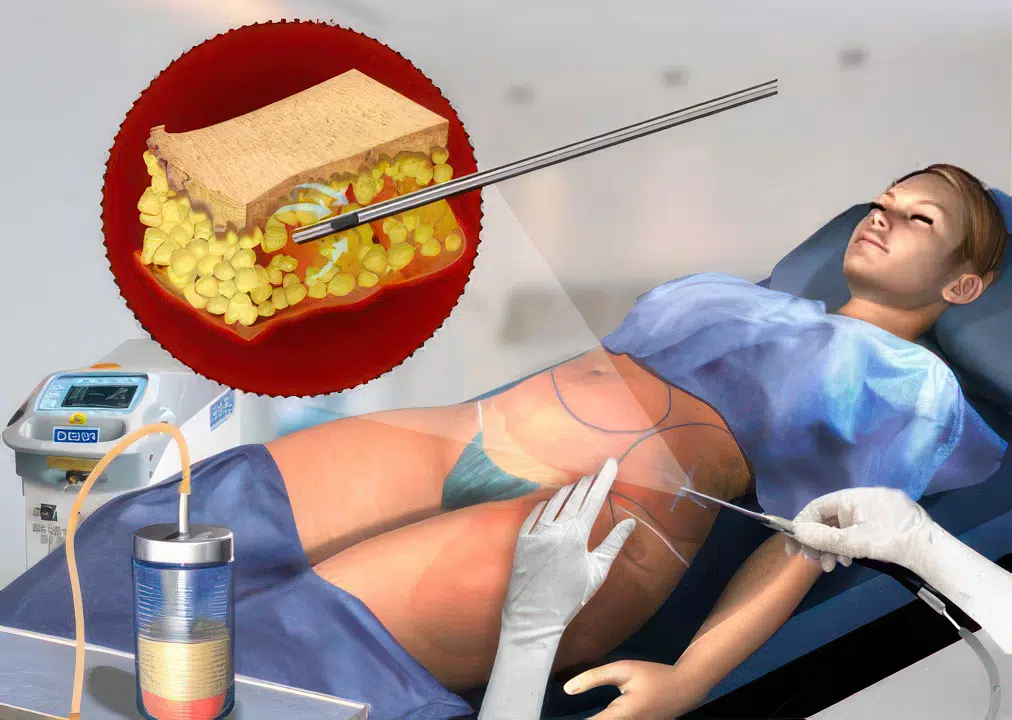
Suction Assisted Liposuction
Definition Suction-Assisted Liposuction (SAL)
Suction-assisted liposuction (SAL) is actually a clinical name for the traditional liposuction, also known as liposculpture. Doctors often use a special solution known as tumescent fluid (made up of saline water, lidocaine, and epinephrine) to inject into the targeted area to firm up and expand the treated area.
In general, SAL addresses persistent pockets of fat that refuse to go away despite diet and exercise. The goal is to enhance the body’s contours and shape.
- More about Suction Assisted Liposuction
Process of Suction-Assisted Liposuction (SAL)
SAL is a traditional approach that relies on a small tube connected to a vacuum-like machine. This tube (or a cannula) is used to extract fat cells from the body through small incisions. Typically, the procedure is performed under general anesthesia, but it can be done using local anesthesia for smaller areas.
The surgeon must make tiny incisions near the target area and connect a slim tube to a suction device under the skin. With back-and-forth motions, this tube breaks down the fat, which is then removed through suction. In some cases, ultrasound and high-frequency technology may be used to aid in breaking down fat.
Safety of Suction-Assisted Liposuction (SAL)
Liposuction is generally a satisfying, safe procedure with few significant long-term issues or complications. While it’s rare, some patients may experience severe bruising and prolonged swelling. In other cases, however, significant bleeding and blood buildup in the tissues may occur, which may require drainage.
Unfortunately, there may be fluid accumulation (seroma) in the area where fat was removed, which can usually be resolved by draining with a needle and syringe during a clinic visit.
In the long term, there may be minor issues like over-corrections and irregularities. You may need to wait for at least six months before considering any potential revisions, however.
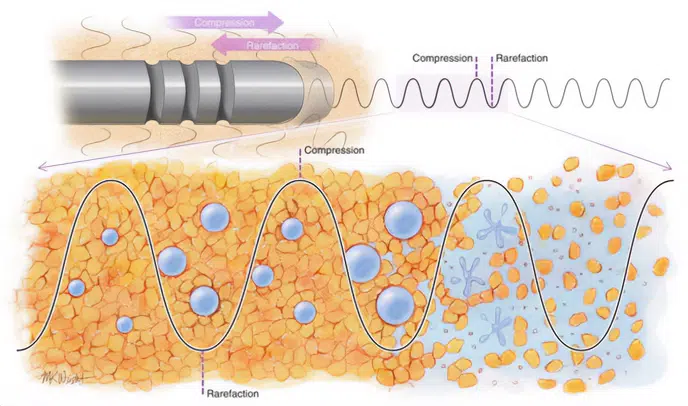
Ultrasound-Assisted Liposuction (UAL)
Definition of Ultrasound-Assisted Liposuction (UAL)
Ultrasonic-assisted liposuction (UAL) is a technique that relies on a specialized cannula emitting safe soundwaves.
These soundwaves can transform fat into a liquid state, which makes it easier to extract while preserving the surrounding tissues. It’s highly effective in areas where fat cells are denser or have larger volumes.
In short, the method uses ultrasound waves to break down and emulsify fat cells, besides offering the additional advantage of mild skin tightening. Indeed, ultrasound waves aid in fat breakdown and, at the same time, provide some gentle skin tightening.
Benefits of Ultrasound-Assisted Liposuction (UAL)
Ultrasonic-assisted liposuction (UAL) is a good alternative to traditional suction-assisted liposuction (SAL) as it aims to overcome some of SAL’s limitations. While SAL is the oldest and most established method, UAL offers several competitive advantages, such as:
- Enhanced precision in fat removal.
- Effectiveness in targeting stubborn fat rolls.
- Improved skin contraction.
- Preservation of nearby nerves.
Safety of Ultrasound-Assisted Liposuction (UAL)
Although UAL offers improved precision, it still has some potential drawbacks. One significant concern is a higher risk of scarring in comparison to SAL. Additionally, there’s the potential for skin loss, the formation of abdominal holes, and nerve damage. Like any surgical procedure, the risk of infection is also present.
Another possible issue is the development of seromas, which are fluid-filled pockets that can emerge at the site of liposuction. They result from a combination of residual blood plasma and deceased cells leaving the body following the procedure.
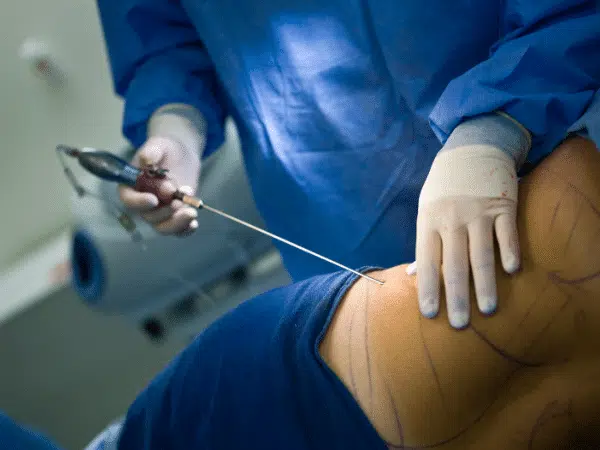
Speak with certified surgeons and medical consultants!
Lipo 360
Definition of Lipo 360
Lipo 360 (also known as 360 lipo) simply refers to liposuction all around the midsection, covering a full 360 degrees of the body. In other words, it involves removing excess fat from the stomach and “love handles”.
Any a liposuction procedure that targets both the abdomen and the waist/hips practically falls under the category of lipo 360. This type of liposuction is commonly offered only by experts who can perform extensive surgeries.
However, there isn’t a universal definition for lipo 360 as some surgeons might extend it to include liposuction on the back. Hence, this term isn’t officially standardized, and interpretations may vary among practitioners. It is also good to know the difference between lipo 360 and full-body liposuction.
Benefits of Lipo 360
Lipo 360 offers comes with multiple advantages when compared to traditional liposuction methods. For starters, lipo 360 can provide more significant results and greatly improve the overall shape of the body in comparison to spot treatments like abdominal liposuction.
People who choose lipo 360 are often looking to enhance their overall body proportions, and thankfully, this type can help them achieve an attractive figure.
In traditional liposuction, the primary focus is on removing fat cells from common areas like the abdomen using vacuum suction. Lipo 360 follows a similar approach but takes it a step further by sculpting and shaping the midsection areas, where stubborn fat largely accumulates.
Lipo 360 is also often performed in combination with a Brazilian butt lift (BBL) for a comprehensive body contouring procedure to get a more balanced look.
Safety of Lipo 360
Thanks to the huge scientific jumps in liposuction techniques over the past few decades, procedures like lipo 360 are now safer than ever and can offer improved safety for the many patients choosing this treatment each year.
However, like any surgical procedure offered by plastic surgeons, liposuction 360 carries certain risks. The safety of your liposuction experience primarily depends on the expertise of your surgeon.
Therefore, it’s very important to choose your surgeon carefully and have a thorough discussion about any potential risks before undergoing the procedure. In short, your surgeon must maintain strict safety measures both before and after the procedure.
Given that lipo 360 targets a larger portion of the body, the procedure itself tends to take more time to complete than other similar procedures. It’s well-known that longer procedures can place added physiological and psychological stress on the body.
Plus Size Lipo
Definition of Plus Size Lipo
Plus size liposuction goes with other names such as high-volume or large-volume liposuction. The technique offers a practical solution for those struggling with excess weight to eliminate significant fat deposits and enhance body contours.
In short, it resembles standard liposuction but is designed more specifically to handle larger fat volumes in plus sized men and women.
Like other liposuction types, plus size lipo focuses on fat reduction or sculpting to enable the removal of substantial fat deposits from the body.
Benefits of Plus Size Lipo
Many patients choose to undergo extensive or plus size liposuction to reshape particular parts of their body, like their stomach, back, and thighs. However, this type of liposuction can also bring various other advantages that contribute positively to a patient’s general well-being.
In fact, research has demonstrated that undergoing liposuction when you’re plus-size can lead to several health benefits. After all, fat pockets are a source of huge stress on multiple systems in the body.
Plus size liposuction can lead to a decrease in pulse rate, lower blood pressure, improved blood glucose levels, and boosted self-confidence. These effects surely go beyond mere cosmetic changes and can have a profound impact on a patient’s overall health.
Safety of Plus Size Lipo
Surgeons frequently decline to perform liposuction procedures for plus-sized men and women. As a result, it can be quite challenging to access or obtain a comprehensive procedure like plus-size lipo 360.
This is primarily due to the risks associated with the procedure for obese people, particularly those with underlying medical conditions like diabetes or cardiovascular diseases.
In any case, the procedure can potentially lead to various side effects, including:
- Serious infections or excessive bleeding
- inflammation or severe bruising
- Irregularities or deformities
- Blood clots
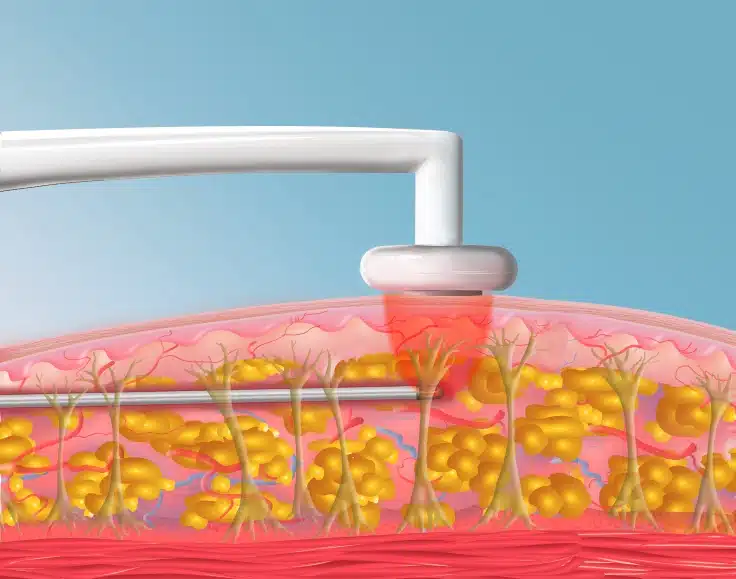
Radiofrequency (RF)-Assisted Liposuction
Definition of Radiofrequency (RF)-Assisted Liposuction
Radiofrequency-Assisted Liposuction (RFAL) is a newly introduced, less invasive, innovative liposuction procedure that’s also known commercially as BodyTite or FaceTite. In short, RFAL relies on thermal energy to help tighten the skin and eliminate excess fat.
By using radiofrequency waves, RFAL can also work alongside other conventional liposuction methods to dissolve fat and stimulate collagen production, which can result in slimmer and firmer skin.
Benefits of Radiofrequency (RF)-Assisted Liposuction
Radiofrequency-assisted liposuction can bring a significant transformation to the body along with other benefits. Indeed, it can offer a combination of benefits such as liquefying fat, coagulating blood vessels, and tightening skin tissue.
The results of this procedure are notably effective as it can yield to a more toned and slimmer appearance. Additionally, RFAL offers several other advantages:
- Can be performed with local anesthesia.
- It can effectively reduce fatty deposits.
- You can go home the same day (no overnight stay is required).
- The recovery period is generally short, usually lasting just 1 to 2 days.
- You can resume work the day after the procedure.
- It uses tiny microcannulas, which minimizes the risk of skin irregularities.
- It’s associated with a high level of patient satisfaction.
Safety of Radiofrequency (RF)-Assisted Liposuction
Radiofrequency-assisted liposuction is still a new approach, but the available evidence describes it as a safe, minimally invasive procedure that requires tiny incisions and leaves no visible scars.
Furthermore, it can be performed with only local anesthesia, making it safer and more convenient for many patients. Generally, patients encounter less bruising, pain, and discomfort compared to traditional procedures. Besides, the use of compression garments isn’t typically required with RFAL, unlike other liposuction types.
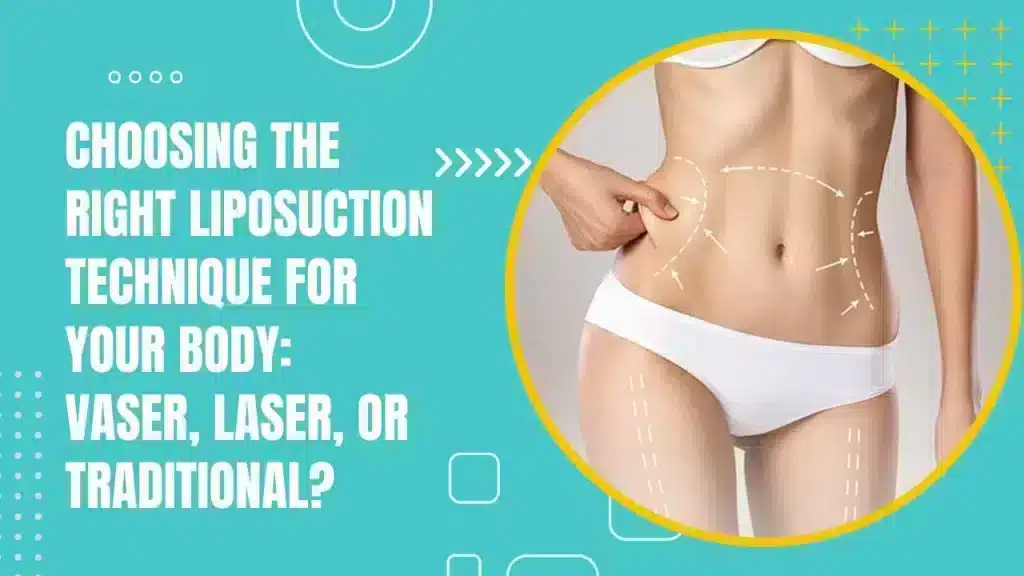
Nonsurgical Liposuction
Definition of Nonsurgical Liposuction
There are many nonsurgical alternatives to the surgical invasive liposuction techniques. These approaches rely on different innovative technologies that use heat, cooling, ultrasound, or specific medications to target fat cells, at least in specific areas in the body.
While these treatments can be effective, they don’t replace the efficacy of traditional liposuction. However, they serve as secondary options for those who either can’t or prefer not to undergo surgical procedures.
Types of Nonsurgical Liposuction
Clinics offer various methods for nonsurgical fat reduction, including:
Cryolipolysis (CoolSculpting®)
Cryolipolysis is a noninvasive procedure that uses extreme cold to break down fat cells and reduce fat deposits. During this process, the practitioners place a special device on the skin of the targeted area and expose it to temperatures low enough to freeze and destroy fat cells. Interestingly, the cold doesn’t harm skin, muscle, or nerve tissues. CoolSculpting is the specific brand name for cryolipolysis.
Injectable Deoxycholic Acid (Kybella®)
Deoxycholic acid can be used to break down fat cells in localized areas. Naturally, deoxycholic acid naturally occurs in the body to aid fat digestion.
Kybella, previously known as ATX-101, is the only FDA-approved version of injectable deoxycholic acid, and it’s particularly effective for reducing a double chin.

Red Light Therapy (UltraSlim)
A more recent addition to non-surgical fat reduction methods is red light therapy, which has also received FDA clearance. Rather than eliminating fat cells, red light therapy involves the use of specific light wavelengths delivered through the skin via a specialized lamp to target subcutaneous fat cells.
Effectiveness of Nonsurgical Liposuction
Fat reduction through nonsurgical methods is a gradual process that requires multiple sessions over weeks or even months. This approach presents some challenges since it’s applied externally, which makes it harder to precisely target specific fat deposits.
Consequently, surgeons may find it challenging to effectively address fat in areas that are difficult to reach or in patients with significant scar tissue.
Furthermore, observing the true effectiveness of nonsurgical fat reduction can be a bit tricky because the surgeon doesn’t have immediate visual feedback. They need to wait for many sessions to refine the results. Also, nonsurgical fat reduction doesn’t yield dramatic changes, and it’s not suitable for those who require the removal of large volumes of fat.
Comparing Different Types of Liposuction
In the table below, you can find a comprehensive side-by-side comparison of most liposuction types. Liposuction types comparison is very helpful for those confused regarding the matter.
| Procedure | Anesthesia | Mechanism | Effectiveness | Safety |
| Tumescent Liposuction | Local anesthesia | Infusion of a mixture of adrenaline and saline | Effective for small to medium-sized areas | Generally considered safe |
| VASER Liposuction | Local anesthesia | Ultrasound energy or ultrasound waves | Effective for precise body sculpting | Minimal damage to surrounding tissues |
| Laser-assisted Liposuction | Local anesthesia | Laser energy emitted by paddle-like applicators | Effective for skin tightening and fat removal | Possible risk of burns and complications |
| Power-Assisted Liposuction (PAL) | Local anesthesia | Mechanical vibrations | Effective for reducing surgeon’s physical effort | Generally safe, but requires experience |
| Water-Assisted Liposuction (WAL) | Local anesthesia | Jet of water and suction | Effective for large areas and fibrous fat removal | Less bruising and swelling |
| Suction-Assisted Liposuction (SAL) | N/A | Traditional suction | Effective for various body areas | Generally considered safe |
| Ultrasound-Assisted Liposuction (UAL) | Local anesthesia | Ultrasound energy | Effective for fat emulsification and removal | Safe but may lead to skin burns and complications |
| Radiofrequency (RF)-assisted liposuction | Local anesthesia | Radiofrequency energy | Effective for skin tightening and fat reduction | Minimal risk of burns, suitable for some |
| Plus Size Lipo | General anesthesia | Technique dependent | Effective for larger areas, specifically for plus size | Generally safe but may require more time |
| Lipo 360 | General anesthesia | Technique dependent | Comprehensive liposuction targeting entire torso | Generally considered safe |
| Nonsurgical Liposuction | Local anesthesia | Technique dependent | Non-invasive, less effective than surgical options | Minimal downtime, low risk of complications |
Give us a call now!
Liposuction Areas
Liposuction helps many people achieve a more contoured and slim body by addressing persistent fat deposits in large and small areas. The different parts of the body where liposuction can be effective include:
Back liposuction
Liposuction can contour and reduce fat in the flanks (love handles) or back rolls, especially using the power-assisted technique.
Abdomen liposuction
Excess fat around the midsection (abdomen and love handles) that doesn’t respond to conventional methods, such as diet or exercise, can be effectively targeted by liposuction.
Chest liposuction
Men dealing with gynecomastia (large boobs) or women with excess fat in the breast area can choose liposuction to address these concerns.
Upper Arms liposuction
Liposuction can help tone and tighten upper arms and make it easier to achieve a more sculpted arm shape.
Calves & Ankles liposuction
Liposuction is a good solution for the bulky calves or thicker ankles as it can help you achieve more toned and well-proportioned legs.
Face, Cheeks, Chin & Neck liposuction
Liposuction can sculpt the face too. In fact, it can help reduce unwanted fat in the jawline, chin, and neck areas.
Thighs, Hips & Buttocks liposuction
Enhancing the thighs’ curves through liposuction be done through removing excess fat from the hips and buttocks and grant women a desirable option.
Inner Knees liposuction
Even the fat pockets on the inner side of your knees can be effectively addressed through liposuction.
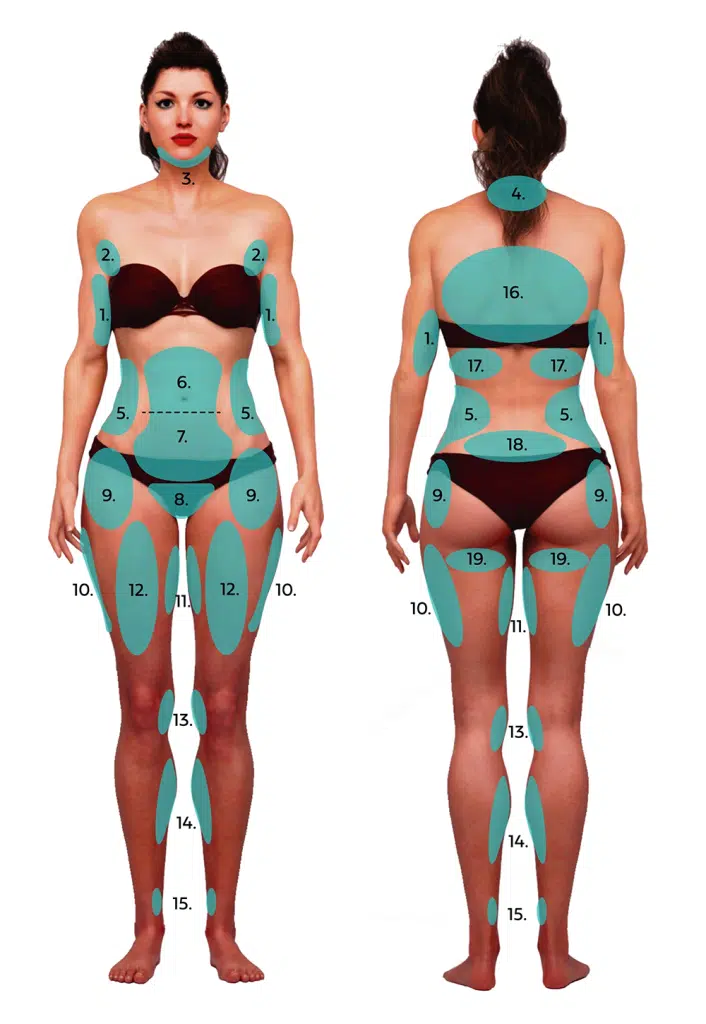
Patient Testimonials for Different Liposuction Procedures
You can find patient testimonials for any type of liposuction carried out inside International Clinics in Turkey. Below are some testimonials of patients who underwent liposuction in our clinics (we used their initials only instead of their names due to privacy concerns).
“Well, hmm, I was thinking power-assisted liposuction is hard, but Dr. Mustafa surprised me with his skills and precision. It turned out to be the answer to my upper arm stubborn hellish fat. Recovery after the procedure wasn’t harder either and I’m doing well now. Do I recommend it? hmmm, yup”
Patient R.K
“I chose VASER liposuction to make my thighs look better after my pregnancy. I read a lot about it and really the ultrasound energy used in this procedure impressed me. The surgeons in the clinics sculpted my thighs, without pain, but I felt some numbness for some time. Still, I can recommend it”
Patient S.M
” What a service! I heard a lot, but reality did better than I thought! Laser lipo intrigued me with the results I have gotten so far. My recovery was easy, and I now have a more contoured stomach. I’m much more confident in my appearance, thank you International Clinics.”
Patient C.J
Types of Liposuction FAQs
There is no census on the most effective type of liposuction among experts. However, some voices consider tumescent liposuction as the most effective.
There are at least six major types of liposuction procedures, including tumescent liposuction, ultrasound-assisted liposuction, water-assisted liposuction, power-assisted liposuction, laser-assisted liposuction, and the traditional (suction-assisted) liposuction.
Tumescent liposuction is considered as the most common or prevalent type of liposuction.
There is no agreement among experts on the safest type of liposuction. Some consider tumescent liposuction as the safest type, while others see laser liposuction as the safest.
The newest type of liposuction is radiofrequency (RF)-assisted liposuction. However, laser-assisted Liposuction is also relatively considered new as well.
The easiest type to carry out is the laser liposuction, which relies majorly on using laser devices of different capabilities.
Conclusion
When searching for liposuction, many people feel overwhelmed by the types and techniques available for this procedure. After all, the internet provides an abundance of information on the subject, which increases the number of questions and confusion.
In this guide, we tried our best to provide patients with a comprehensive overview of the most common types, including traditional (suction-assisted) liposuction, tumescent liposuction, laser-assisted liposuction, ultrasound-assisted liposuction, water-assisted liposuction, power-assisted liposuction, and others.
Regardless of the type or technique, it’s very important to accept the fact that liposuction isn’t a weight loss solution. Instead, its primary goal is to reshape and contour the body and help you achieve a more well-defined and sculpted appearance.
International Clinics has helped thousands of patients from Europe and United States decide the liposuction type that suits their body configuration. You can reach us now using the Contact Us buttons on our website.
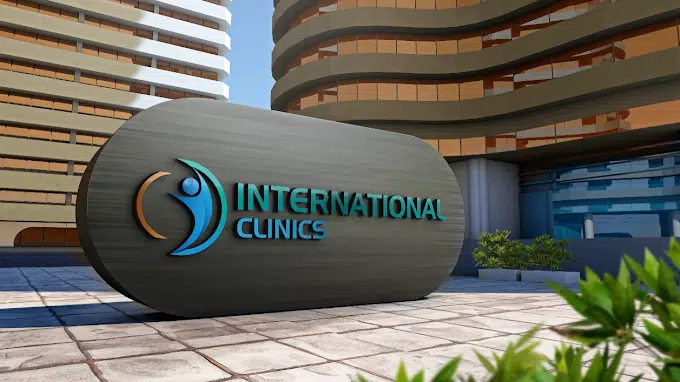
Read more: Liposuction cost in Turkey
